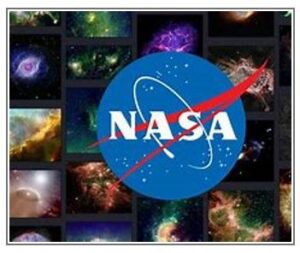By Jaime Yarbrough, Science Editor – January 27, 2021
What am I about to read? Why do I need to read it? How will it make my life better?
Space, the final frontier. Nah….we know more about space than we do about our own planets oceans. Besides, while space, the galaxy and a universe of galaxies are quite the frontier there is still the exceedingly small frontier of the atoms, particle and quantum physics. I am a huge fan of ‘fractals’ that I discovered in the late 90’s. That is when I also found, in addition to a few books in the library, a documentary narrated by Sir Arthur C. Clark, the futurist and science fiction writer, in 1995, a documentary where he mentioned fractals, products of the ‘Julia set’ which led to the “Mandelbrot set” were called “the thumbprint of God. “ [ Mandelbrot Set (M-Set). Fractals: The Colors of Infinity]


The words used throughout to describe the very large and the very small is “infinity” usually in conjunction with “forever.” These words describe something most people cannot wrap their heads around, something that does not end. It describes a place or time that does not exist, or perhaps we haven’t found it yet. Between here and ‘there’ is both space and time. Space we can see, but time we cannot. Objects we can see, with the aid of telescopes.
The distances used to describe some of the distances involved are things like ‘ light-year’ and ‘parsec’ for the large, nano-meters, angstroms, for the very small and ‘pico and femto seconds’ for time. All these things help describe the universe in which we live. It is also important when you go to explore the vastness of each of these realms.
Most of us, in America using Imperial units and the United States Customary System (USCS), e.g. inches, feet, yards and miles OR Metric SI units, the International System of Units, e.g. Meters mm, cm and km, to relate to the distance from Earth, the Sun and the planets in terms of miles. The miles between them are exceptionally large.
In our last chapter we spoke of orbital dynamics and celestial mechanics so when we address going to the moon or Mars both time and distance need to be considered. Everything is in motion and time and distance are constantly changing. The minimum distance from the Earth to Mars, 33.3 million miles (53.6 km) and the maximum distance 139.8 million miles (225 km)
Let us return to Earth. How do we get there? How have we gotten anywhere?
People power. The U.S. Aerospace & Defense industry employed 2.5 million workers in 2018. This figure represents approximately two percent of the nation’s total employment base and 20 percent of the nation’s manufacturing workforce. The average salary of an employee in the U.S. Aerospace & Defense industry is 87 percent above the national average.
NASA, the federal agency that specializes in air travel and space exploration, has about 17,000 workers. And even though most of these workers never leave Earth, they are involved in the projects that do. In our next chapter I will cover SpaceX, Blue Horizon and Virgin Galactic.

Employment for aerospace engineers should increase by 6% between 2016 and 2026, according to the U.S. Bureau of Labor Statistics (BLS)
Before I go into a breakdown of some of the specialties those who are not usually included there are the ‘support’ people whose work support those who ‘run the machine.’ I’m talking about cooks, electricians, plumbers, media, logistics planners, human resources, and hundreds of other occupations not listed on the ‘B-list’ – the A-list are, of course, Astronauts.
The Bureau of Labor Statistics (BLS) projects about 8,600 job openings overall between 2014 and 2024 for astronomers, atmospheric and space scientists, and physicists. However, this number includes projected openings for these scientists in all types of jobs, not just in space exploration.
Here, is a short list with many sub-specialties of the ‘B-list’ (my terms):
[CREDIT:
[https://www.bls.gov/careeroutlook/2016/article/careers-in-space.htm ]
Engineers
Engineers solve problems, often working on teams. Designing a new rocket, for example, may involve the contributions of several types of engineers. Some engineers may design hardware, such as instruments used to collect data. Others may develop stronger materials. Still others may run diagnostics and tests on products they are developing.
BLS projects about 171,900 job openings overall between 2014 and 2024 for aerospace, computer hardware, electronics, and mechanical engineers. This number includes projected openings for these engineers in all types of jobs, however, not just in space exploration.
Engineer testing launch system
Aerospace engineers. These engineers design, construct, and test aircraft, missiles, and spacecraft. In their designs, aerospace engineers must consider each environment’s limitations. For example, because jet engines don’t work in space, where there is no air to push, aerospace engineers instead use rockets, which use liquid oxygen and propellant to build thrust.
Computer hardware engineers. Hardware engineers research, design, develop, and test computer systems and equipment that is used to measure activity in outer space or on Earth. They document their work, writing detailed descriptions of how their designs function so that others may use the products they develop.
Electronics engineers. Electronics engineers focus on specific equipment, such as the instrument panels in aircraft and spacecraft. They may design new components or inspect existing ones to ensure that the equipment is safe. They may also develop maintenance procedures for the components they design.

Mechanical engineers. These engineers often partner with other workers to create products—including sensors, tools, engines, or other machines—that support space missions. For example, mechanical engineers may collaborate with aerospace engineers to develop the steering mechanism on rocket nozzles.
Technicians
Technicians working with engineers or scientists contribute to space exploration in a variety of ways. For example, they might help engineers test designs or determine whether climate conditions are suitable for launching a mission.
BLS projects about 44,400 job openings overall between 2014 and 2024 for aerospace engineering and operations technicians; avionics technicians; and life, physical, and social science technicians, all other, which includes meteorological aides. But this number includes projected openings for these technicians in all types of jobs, not just in space exploration.
Aerospace engineering technicians. These technicians help engineers design, develop, and test products. For example, an engineering technician working on a space rocket might help with an engine test by setting up and conducting tests, recording results, and comparing those results with test objectives for recommending changes.

Avionics technicians. These technicians attend to the communication, navigation, and other systems central to aircraft and spacecraft. Their tasks may include testing electronic instruments, installing instrument panels, and replacing malfunctioning components. They also make a record of any problems and repairs, information engineers may then use for improving future designs.
Meteorological technicians. Meteorological technicians, also called meteorological aides, measure weather or climate-related conditions to produce data for meteorologists. For example, to ensure that conditions are safe for a space launch, these technicians may release weather balloons to assess wind activity in the atmosphere.
I promise none of these people came from another planet. They all came first, from mothers and fathers, then High Schools and Colleges, and yes, some from the military. The longest journey starts with the first step. Oh, and the sky is no longer the limit. It’s the beginning.


Sam,
Don’t be so quick to discount your wealth of knowledge and experience because of age.
It used to be when we both grew up that it was from our elders came the ‘great knowledge’ and wisdom to which someday we too would have. The easiest and most readily example of this is the teachers themselves. Even if they made it their mission right out of high school to pursue Education as a career field or if it came later from changing boats in the middle of the career stream. SCORE – the mentoring arm of the Small Business Administration is made up of retired executives. Regardless, they ‘are older’ and there simply is no replacement for hindsight. It instills vision to try, to achieve.
Thank you for your comment.
Jaime
Great summary. Would be nice to see this article get to the local High School students and College of Redwoods students via zoom science and and homeroom teachers. They are the ones that can use this type of info. Well Done.
Thank you! And so right you are. I am looking to have an audience with the DNHS Principal to do just that. As a member of the National Space Society (which you are encouraged to join) it is our mission to inform the public but specifically expose our youth through the educational system about the history of the space program and its future direction. I am looking into the resources of my own organization for any and all assistance as well.
I appreciate your weighing in on this and showing the readership your thoughts, and interest.
Sincerely,
Jaime
https://space.nss.org
If only I was young again. What a delightful prospect to actually explore the universe first hand rather than through the lense of a telescope. I grew up on Clark and Asimov, plus a host of others. While it may have been only fiction back then, there is no excuse for it not to become real. The opportunities for young people seem endless. Of course it may have been that way when I was younger, I just couldn’t see it happening for awhile. Now Mars may soon be visited, and the rest is yet to be discovered. Amazing!!!!!!!!!!